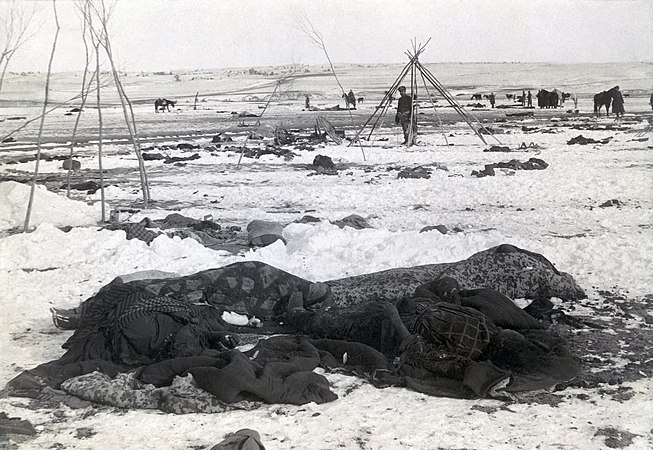Crowdsourcing/Restoration and reuse of images/Improving image metadata
Once an image is uploaded to Commons, its description and metadata are open for editing by anyone, just like Wikipedia. Possible changes include:
- linking terms in the description to explanations (such as Wiktionary definitions or Wikipedia articles)
- translating the description into other languages
- categorising
- in rare cases: improving or correcting the description
The more discoverable files are on Commons, the more likely they are to be found. So it is strongly advisable to include a full catalogue description and meaningful categories when the files are uploaded. There are Wikimedia noticeboards and mailing lists which can be used to raise awareness of media collections that are being shared.
A set of images shared by the US Library of Congress included one from the aftermath of the Wounded Knee Massacre. That image showed "scattered debris" according to the catalogue description. With the image substantially cleaned up by a Commons volunteer, the "debris" was identifiable as four corpses of Sioux people. The Library's description was updated to reflect this, as was the programme of an exhibition featuring the photograph.
-
Battle of Wounded Knee ‘scattered debris’ – US Library of Congress via Wikimedia Commons
-
Battle of Wounded Knee, four bodies – US Library of Congress / Commons user Durova via Wikimedia Commons
Other media
editSimilar restoration and improvement can happen with audio, and free software for editing and clean-up is widely available as it is for images. An example is an interview with British politician Tony Benn which has been cleaned up for use in a Wikinews article, fixing the frequency balance and removing pauses. Commons has relatively little audio content and its requirement for unrestricted formats means that OGG and FLAC audio files are used rather than the more familiar (but patent-encumbered) MP3.
-
Original interview with Tony Benn - Brian McNeil via Wikimedia Commons
-
Edited, cropped and filtered interview - Brian McNeil and User:Symode09 via Wikimedia Commons
| Previous | Index | Next |

